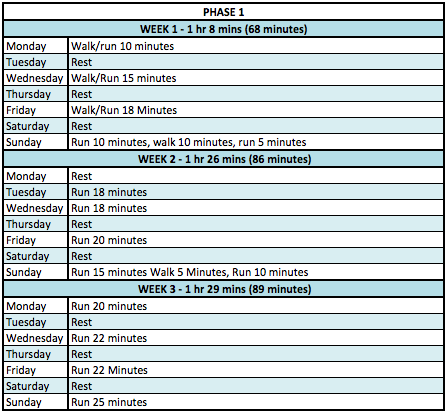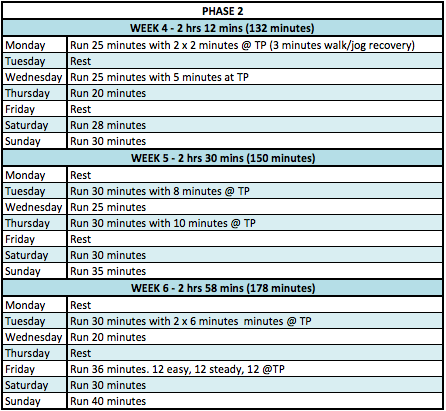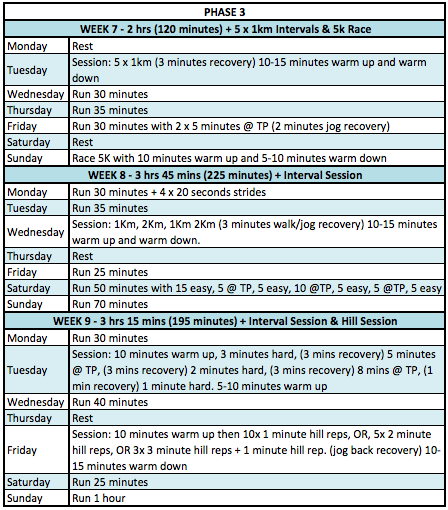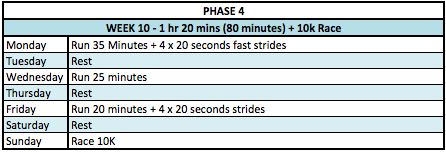
Andy Vernon; GB Olympic athlete and European Athletics Championship medallist has written us an 8 week 5k plan. The plan is split into 4 phases, and is aimed at all abilities, including those who haven’t done much running previously.
More about Andy Vernon
Andy Vernon is a British long-distance runner who specialises in the 5000 metres, the 10,000 metres and Cross Country running. Vernon competed at the 2016 Summer Olympics In Rio De Janeiro in the men’s 10,000 metres. He has also competed in two Commonwealth Games (2010 and 2014) a World Indoor Championship (2014), six World Cross Country Championships (2004, 2005, 2008, 2009, 2010, and 2011), ten European Cross Country Championships (2005-2013 and 2016) winning medals at four of these championships. Vernon also won a Silver medal over 10,000m and a Bronze medal over 5,000m at the European Athletics Championship (2014) and a Gold medal in the 5,000m at the summer University Games (2011). This is in addition to more than 30 National titles.
Vernon also boasts an impressive range of Personal bests of 1500m: 3:42, 3000m: 7:45, 5000m: 13:11, 10,000m: 27:42, 10 Miles: 48:09 and Half Marathon: 62:46. He currently competes for Aldershot, Farnham & District AC.
Whilst following this training program it is important to understand a few rules to get the most out of the training you put in.
- Any day that is just listed as a run for x amount of time is simply a very easy and light run. You should be able to hold a good conversation while doing your easy run and you should always be able to run a bit further if you had to. This type of run is often referred to as ‘junk mileage’ but when training, no mile is a junk mile. Every mile you run serves a purpose and will help you improve endurance and strength while also helping you recover for the next hard day.
- The warm ups and warm downs should be treated exactly like the steady easy running days. They are simply to get the body moving and warmed up prior to starting something faster.
- There should be a considerable change in pace between your warm ups/downs, recoveries and easy running and anything faster. If you can’t pick the pace up for a threshold run or a session rep then you are doing the easy running too fast. It is extremely important that you have a change in pace when required. A one-minute rep should be faster than a five-minute rep. If you start doing everything at the same pace, you will find it very hard to get faster.
- Anything listed as @ TP means at threshold pace. This is the training designed to increase your aerobic capacity and improve your lactic curve. Anything with this should be done at 80-85% of you maximal effort; you should be able to talk in 3-4 words at a time. If in doubt it’s always better to go slightly slower than too fast but make sure it is faster than your easy running.
- Remember that this is a guide and not gospel. If you need to change days around, take an extra day off or two due to tiredness, fatigue or injury than do so. If you need to shorten a run or would like to lengthen a run as you go a long then please do but don’t stray too far from the program if you don’t have to. It has been put together to steadily increase mileage and intensity in a structured way.
- Good luck in achieving your goals and enjoy getting fit.
Phase 1 - Introduction to Running
If you currently do none or very little running then you can’t jump in at the deep end. Running is very strenuous on the muscles, bones and joints and doing too much too quickly is likely to result in injury. You need to condition your body to withstand the stresses and strains it will be put under during training. Thankfully though, the human body is pretty resilient and very adaptable and by following these guidelines you should feel ready to progress on to the next phase comfortably.

Phase 2 - Building Aerobic Capacity
Aerobic Capacity put simply is the amount of oxygen the body can utilise per minute during exercise. The more oxygen your body can breathe in and send to the working muscles, the more efficient you will become allowing your muscles to work longer before fatiguing. This phase is fairly simple, you lengthen your runs and you work at your ‘aerobic threshold’ but the science behind it is not so simple. See below for more info.

What is aerobic threshold? I hear you ask. Well I’ll tell you. Aerobic threshold (sometimes called lactic threshold or tempo running) is a given pace or effort that one can exercise at (in our case run) where the body is at its limit (or threshold) before the onset of lactic acid occurs. Typically this is around 80%-85% of your maximal heart rate and is completely individual as every ones physiology is different. There is a fine line between running at your aerobic threshold and being slightly over. If you’re unsure it’s always better to play it safe and run a bit slower than go too fast and blow up. It’s actually very important that you don’t go too fast as this is a very specific type of training with an outcome that will only work if its done correctly. The idea of it is to increase the bodies’ capacity to working at this effort in order to run further distances, at faster speeds but still staying under that magic threshold effort where you don’t build up the dreaded lactic acid. This will ultimately be just faster than the pace you should try to run your marathon at.
Humans have three energy systems that we can use to exercise: aerobic, anaerobic and neuromuscular. Aerobic is working with oxygen and is used for endurance exercise (typically 10,000m and longer), anaerobic works without oxygen and is used for middle distance events (typically 800m-3000m) while neuromuscular is used for sprinting and power events. The 5000m require both a big aerobic capacity and lots of lactic tolerance, which makes this event very hard to train for at the highest level. If you watch professionals run a 10,000m race, it will generally be run at a medium pace and then they will sprint or ‘kick’, the reason they are able to kick is because they have only been using their aerobic system and not built up any lactic acid. When the end is near and the athletes start to sprint, the body automatically switches over to the anaerobic system. Often the winner is the person who has the highest tolerance to lactic acid or the one who was working within their aerobic system for the longest. The guys who cant kick will have already been running too fast for their ability and would have converted over to their anaerobic system long before the sprint finish begins. The 800m, on the other hand is very different. This race is run completely with the anaerobic system so this event becomes not about who has the fastest kick but who slows down the least. Often in this event every 200m split is slower than the previous. If you’ve ever wondered why the last lap in the 5,000m or 10,000m is often faster than that of a 1500m it’s all to do with the physiological systems the events require.
Phase 3 - 10k Training
Now that we have a pretty big aerobic base to work from we can now start to implement 10k specific training. This will be a mixture of steady running, sessions and long runs building up in either intensity or volume week on week to prepare your body to withstand 10k. It will be key to listen to your body during this phase as it’s the hardest and longest phase of the program. If something starts hurting and you have to miss a day or change things round a bit then by all means do it. Remember that this is just a guide and is not gospel. Missing a few days won’t make much difference over a 10 week period but don’t make the mistake of trying to make the training back up if you do have to miss some training though.


